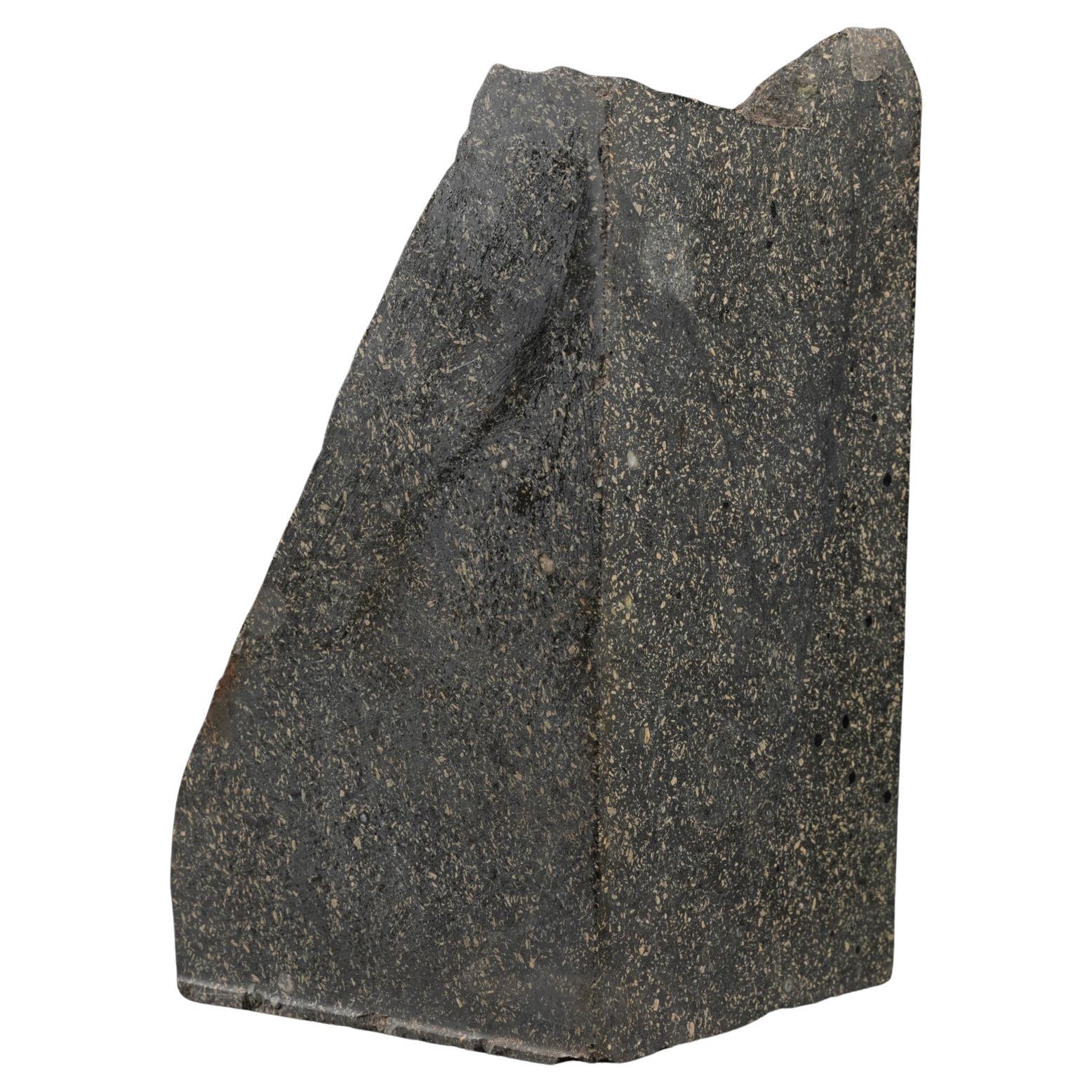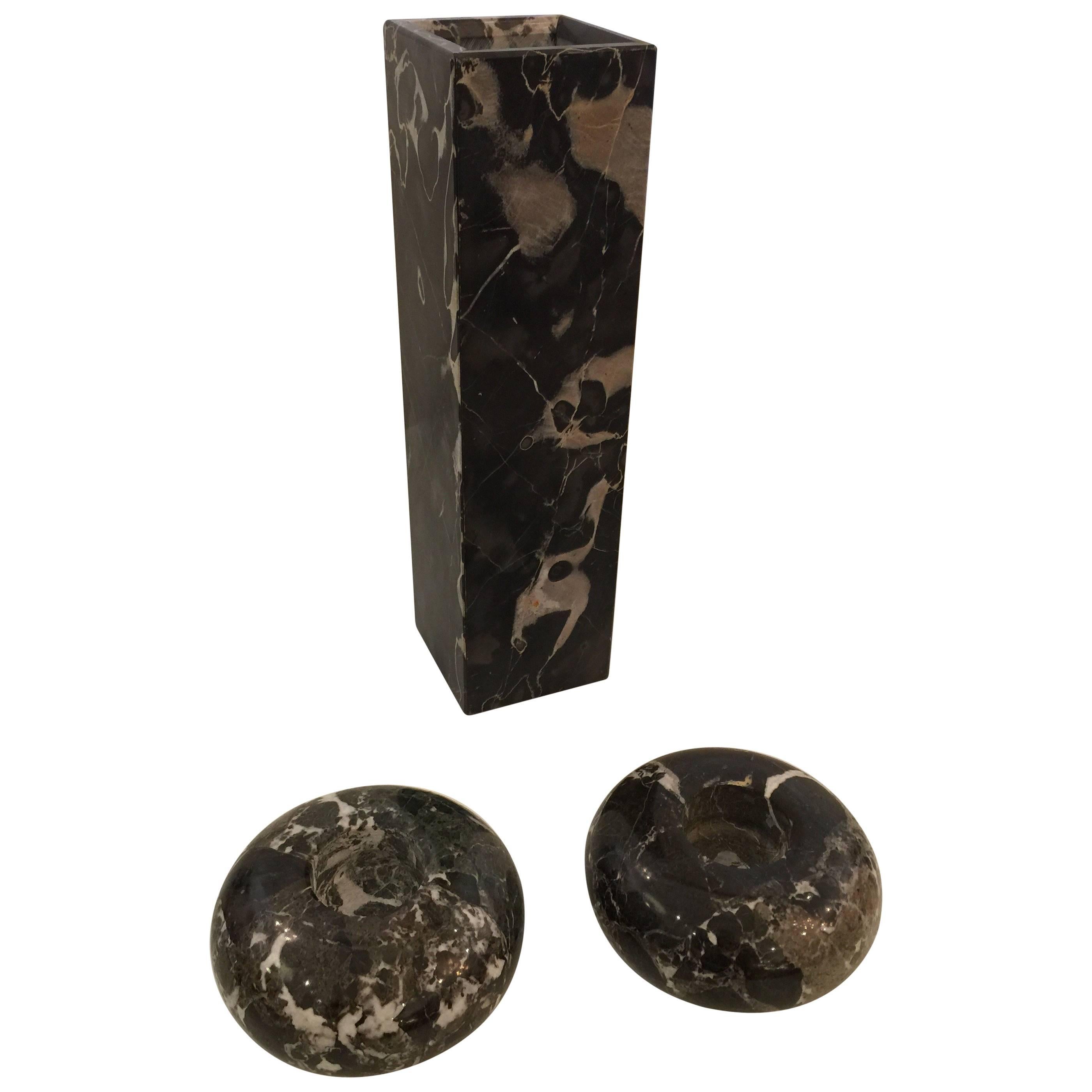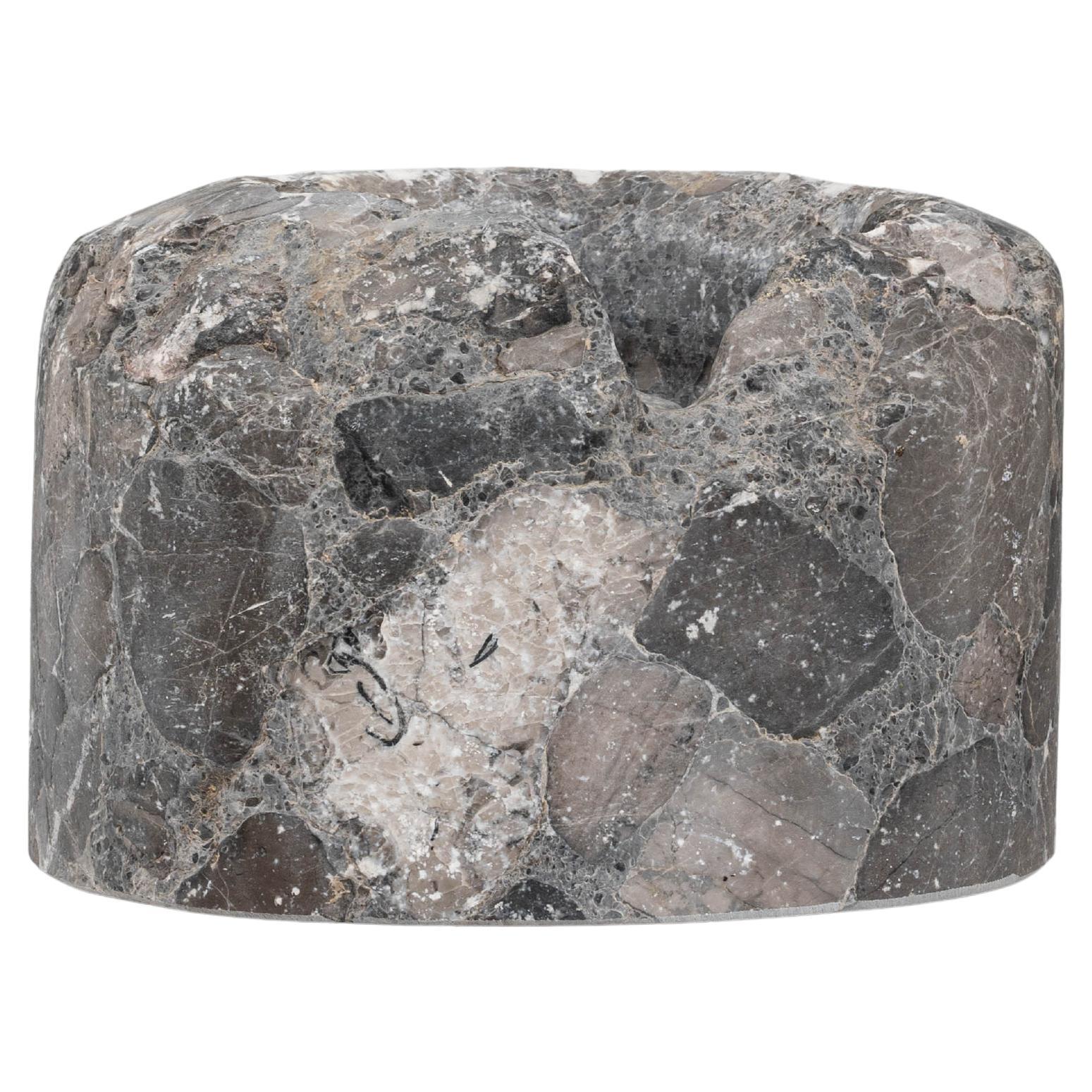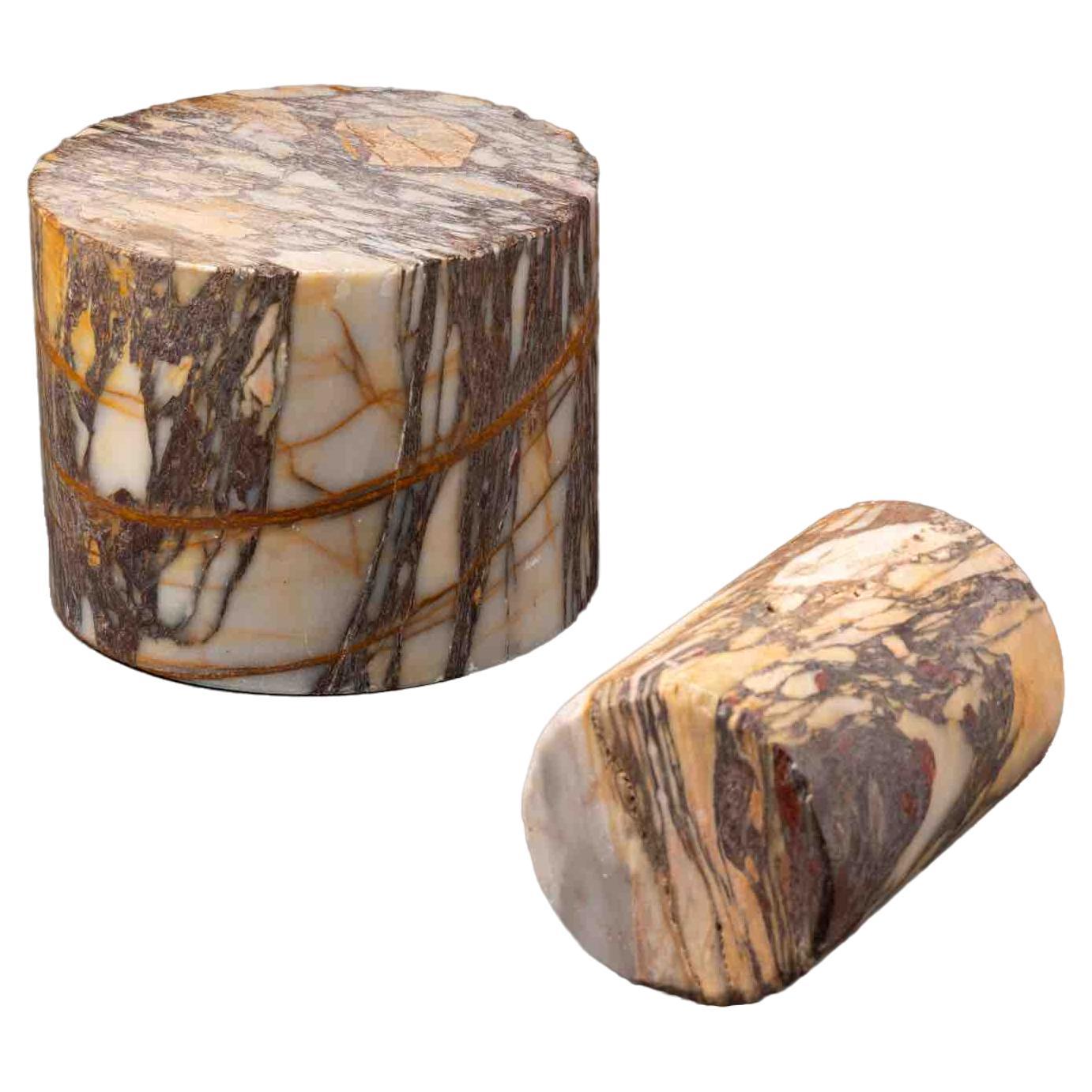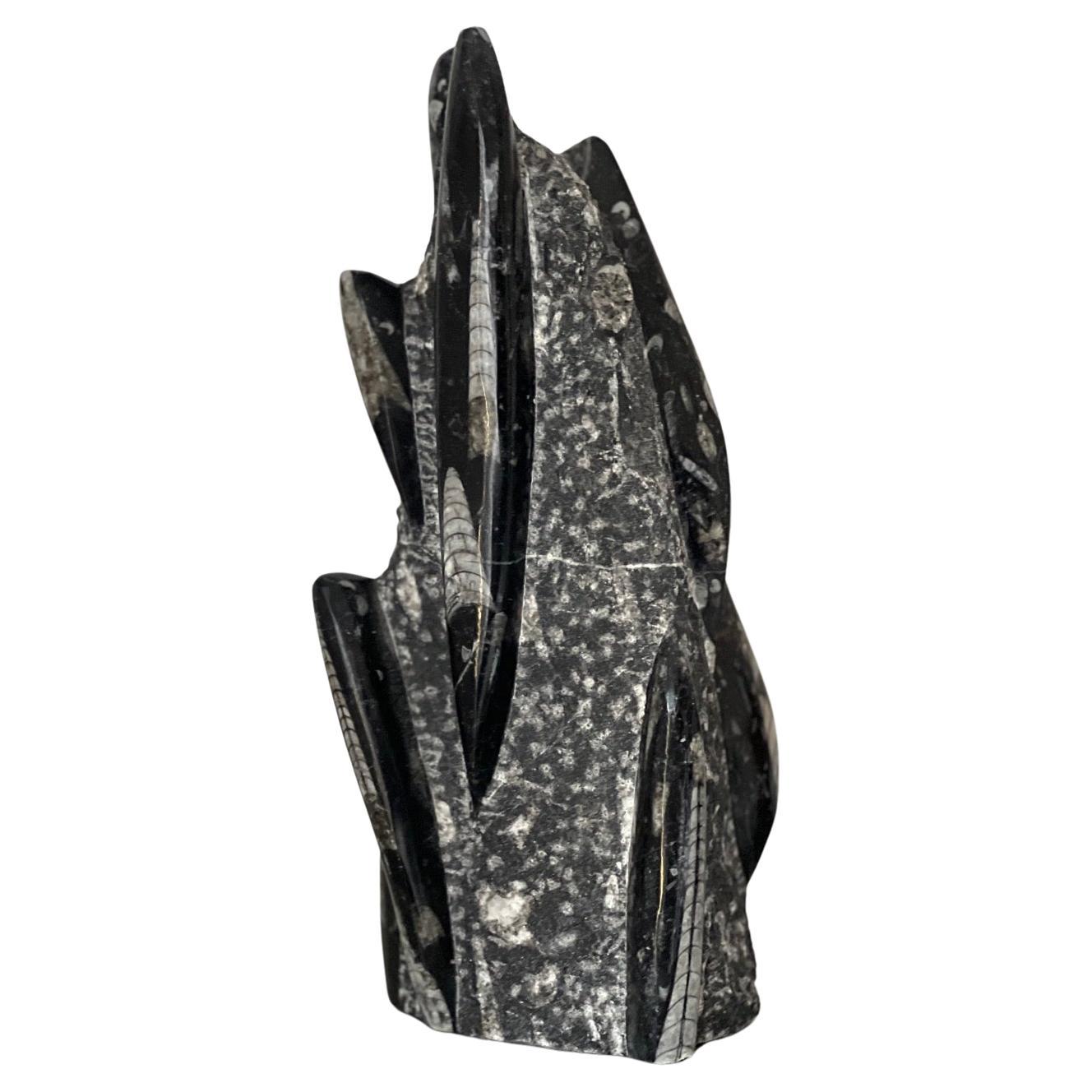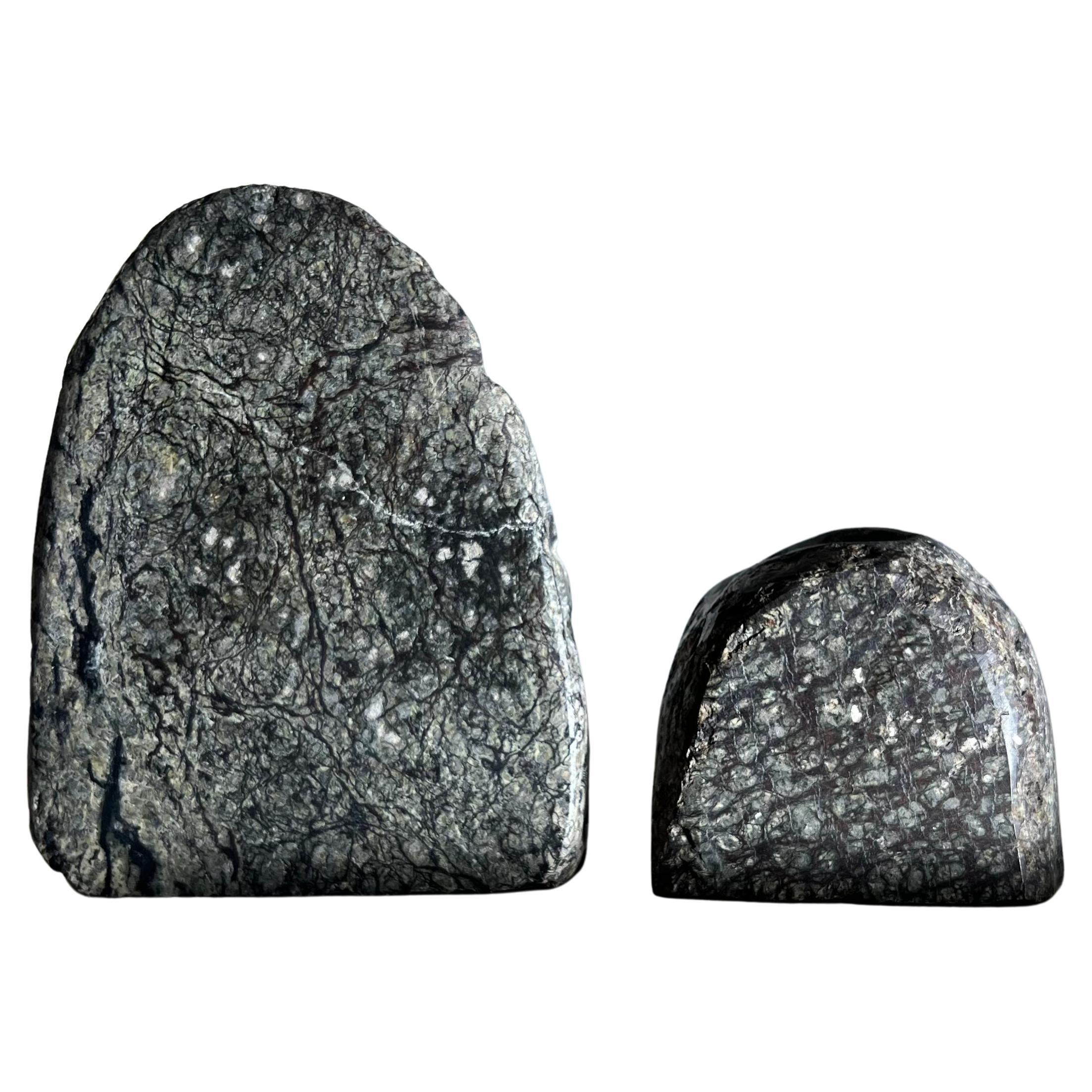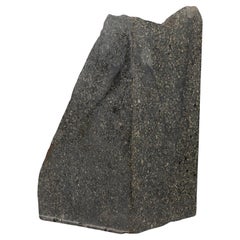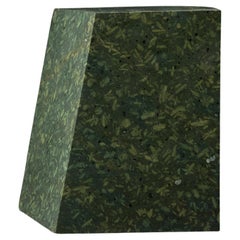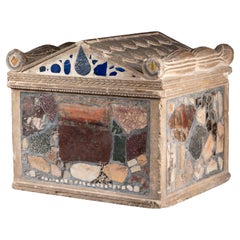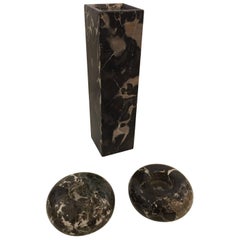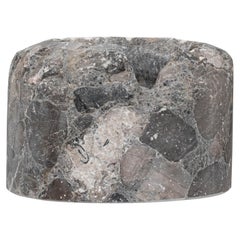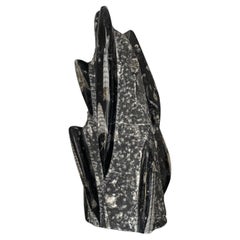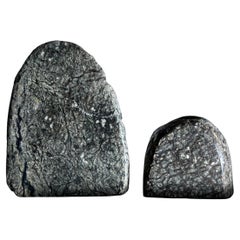Items Similar to Two bases in rare Breccia Africano and Granito Nero
Want more images or videos?
Request additional images or videos from the seller
1 of 5
Two bases in rare Breccia Africano and Granito Nero
$2,148.80
£1,585.09
€1,800
CA$2,966.07
A$3,295.62
CHF 1,732.38
MX$40,226.67
NOK 21,903.44
SEK 20,534.96
DKK 13,702.58
About the Item
Two bases in rare Breccia Africano and Granito Nero
Cylinder in Breccia Africano
H 12.5 × D 7 cm
Cylinder in Granito Nero
H 6 × D 9 cm
These two cylindrical bases made of rare marble are ideal for displaying ancient or modern objects and sculptures. Their pure shape and the beauty of the raw material also make them suitable for decorating a table or a bookshelf.
Breccia Africano, also known as Africano marble, is an exceptional and historically significant stone that was extensively used in ancient Rome. Characterized by its striking color contrasts, Africano marble consists of mottled pink, red, and green fragments set within a dark grey or black matrix. This distinctive aesthetic made it one of the most highly prized marbles of antiquity.
The quarries that supplied Africano marble were lost for centuries, leading to speculation about their origin. Faustino Corsi, in his renowned catalog of marbles, incorrectly assumed that the marble originated from the Greek island of Chios. However, the true source of Africano marble was rediscovered in 1966 by Michael Ballance. He located remnants of the stone near Kara Göl, a flooded quarry at Sigacik, the site of the ancient city of Teos in modern-day Turkey. A second quarry was identified at Beylerköy, about 15 kilometers away.
Roman stone-cutters named the marble "Africano" due to its intense color contrasts. It was among the first colored marbles introduced in Rome and saw its peak usage during the reigns of the emperors from Augustus to the Antonines. Even during the reign of Diocletian (late 3rd to early 4th century AD), Africano marble was still considered one of the most expensive marbles available. Its high value ensured that it was reserved primarily for use by emperors and other elites, and curiously, it is rarely found in Asia Minor, despite being quarried there.The Edict on Maximum Prices, issued by Emperor Diocletian in AD 301, listed Africano marble at 150 denarii per foot (approximately 29.57 cm). This made it more expensive than cipollino marble (100 denarii per foot) but less costly than marbles from Phrygia and Numidia (200 denarii per foot). The pricing reflects its esteemed status, though it remained slightly more accessible than the most luxurious marbles of the time (porphyry and serpentine).
Africano marble was extracted in large quantities and transported to Italy and North Africa, where it was used extensively during the 1st and 2nd centuries AD. It was particularly favored in Augustan architecture (late 1st century BC to early 1st century AD) and was frequently employed in Rome’s grand structures. Notably, two monumental thresholds made from Africano marble—one in the Pantheon and another in the Capitolium at Ostia—demonstrate its continued use during the Hadrianic period (early 2nd century AD), even after the quarries had been largely depleted.
Africano marble stands as a testament to the craftsmanship and aesthetic sensibilities of the ancient Romans. Its specific dark coloration and historical significance continue to captivate scholars and enthusiasts, securing its place among the most distinguished marbles of antiquity.
- Dimensions:Height: 4.93 in (12.5 cm)Diameter: 2.76 in (7 cm)
- Style:Neoclassical (Of the Period)
- Materials and Techniques:
- Place of Origin:
- Period:
- Date of Manufacture:19th century
- Condition:Wear consistent with age and use.
- Seller Location:Bruxelles, BE
- Reference Number:1stDibs: LU6666245072202
About the Seller
5.0
Vetted Professional Seller
Every seller passes strict standards for authenticity and reliability
1stDibs seller since 2022
15 sales on 1stDibs
Typical response time: 2 hours
- ShippingRetrieving quote...Shipping from: Bruxelles, Belgium
- Return Policy
Authenticity Guarantee
In the unlikely event there’s an issue with an item’s authenticity, contact us within 1 year for a full refund. DetailsMoney-Back Guarantee
If your item is not as described, is damaged in transit, or does not arrive, contact us within 7 days for a full refund. Details24-Hour Cancellation
You have a 24-hour grace period in which to reconsider your purchase, with no questions asked.Vetted Professional Sellers
Our world-class sellers must adhere to strict standards for service and quality, maintaining the integrity of our listings.Price-Match Guarantee
If you find that a seller listed the same item for a lower price elsewhere, we’ll match it.Trusted Global Delivery
Our best-in-class carrier network provides specialized shipping options worldwide, including custom delivery.More From This Seller
View AllLarge Imperial Black Porphyry specimen
Located in Bruxelles, BE
Rare and Large Imperial Black Porphyry architectural fragment
partially polished,
23,5 x 15 x 12 cm
Porfido Nero is a rare Black Variety of Imperial Porphyry from Gebel Dokhan (th...
Category
Antique 15th Century and Earlier Italian Classical Roman Natural Specimens
Materials
Porphyry
Two cylindrical colored marble specimens
Located in Bruxelles, BE
Two cylindrical specimens in Breccia Skyros Marble or Settebassi
Those two cylindrical specimens are perfect to serve as bookends or to presents works o...
Category
Antique Late 19th Century Italian Classical Roman Bookends
Materials
Breccia Marble
$2,483 Sale Price / set
20% Off
Elegant base in porfido Serpentino Antico
Located in Bruxelles, BE
Elegant fragment in porfido Serpentino Antico
19,5 x 18 x 12 cm
This beautiful fragment can be used as a base made of rare marble, ideal for displaying ancient or modern objects and...
Category
Antique 15th Century and Earlier Italian Classical Roman Natural Specimens
Materials
Marble
Grand Tour Cinerarium - 18th century
Located in Bruxelles, BE
18th century Grand Tour Cinerarium
Limestone, inlaid with Roman marble fragments and fresco's
Annotation of finding spot indistinctively written on the fragments ("forum trajan","for...
Category
Antique 18th Century Italian Grand Tour Urns
Materials
Limestone, Marble
Two rare Figures in Turkish Attire - Venice, early 17th century
Located in Bruxelles, BE
Rare Bronzes Depicting two Figures in Turkish Attire
Possibly Suleiman the Magnificent at two different ages
bronzes, alabaster bases
Venice, early 17th century
19,5 x 6 x 5 cm
These two rare bronze statuettes represent two figures dressed in elaborate "Turkish" attire. They are mounted on alabaster bases with bronze reliefs—one featuring the winged lion of Venice, and the other possibly symbolizing Turkey with a wolf depiction.
One figure wears a grand külah, a spherical turban with a cone top, signifying royal authority, while the other has a wrapped turban, denoting rank and religious identity. Their garments are richly detailed with intricate engravings, suggesting luxurious fabrics of the Ottoman court.
The statuettes may represent Suleiman the Magnificent at two different stages of life, as both young and old. The sultan depicted alongside the winged lion corresponds to a description from a Venetian delegate in 1534, when Suleiman was 43. At that time, he had conquered Iraq from the Safavids and achieved a decisive victory over the Papal fleet at the Battle of Preveza. He was described as having large eyes, an aquiline nose, and long red mustaches—traits visible in Cristofano dell'Altissimo’s portrait of Suleiman in the Uffizi Gallery in Florence.
Unlike Mehmed II, who commissioned portraits by European artists for diplomatic purposes, Suleiman did not directly order such representations. Instead, his likeness spread through works by artists like Albrecht Dürer, based on sketches made by diplomats. Following his capture of Belgrade in 1521, his victory over Hungary in 1526, and his siege of Vienna...
Category
Antique 17th Century Italian Renaissance Figurative Sculptures
Materials
Alabaster, Bronze
17th century wood and black marble table - North of Italy
Located in Bruxelles, BE
Walnut and marble table
North of Italy, 17th century
Wood and black marble
H 80,5 x L 114 x P 58 cm
This elegant table features a one single solid marble top directly mounted on f...
Category
Antique 17th Century Italian Baroque Side Tables
Materials
Marble
You May Also Like
Nero Marquina Marble Vase and Candleholders
By Angelo Mangiarotti
Located in North Miami, FL
This set of three Italian Nero Marquita marble items are in the style of Sergio Asti or Mangiarotti. Beautiful and simple design, these geometric shapes in rich black Italian marble ...
Category
Vintage 1960s Italian Vases
Materials
Marble
$2,200 / set
19th Century European Marble Mortar
Located in High Point, NC
This 19th Century European marble mortar is a commanding and visually rich example of utilitarian craftsmanship. Carved from a unique conglomerate marble, the surface showcases an in...
Category
Antique 19th Century European Figurative Sculptures
Materials
Marble
Vintage Decorative fossil stone Sculpture sculpure, maroccan Orthoceras
Located in Milano, IT
Fluid Shapes - Decorative Organic Art - Moroccan fossil sculpture
This is a listing for one freestanding orthoceras tower specimen from the Atlas Mountains of Morocco.
As the pict...
Category
Vintage 1970s Italian Mid-Century Modern Natural Specimens
Materials
Limestone
$611 Sale Price
20% Off
Vintage rock form candleholders in real stone, 1970s
Located in View Park, CA
A pair of bouldercore candelaria, 1970s. Tones of basalt, moss, and aubergine. Real stone - heavy. Felted bases. Pick up in LA or worldwide delivery option...
Category
Late 20th Century Brutalist Candlesticks
Materials
Stone
$384 Sale Price / set
20% Off
Pair of Breccia Marble Italian Columns
Located in Stamford, CT
A pair of Breccia marble Italian columns. Early 20th century.
36.24" h x 14" w x 14" d.
Category
Early 20th Century Italian Architectural Elements
Materials
Marble, Breccia Marble
$12,400 / set
Suite of Three Italian Paperweights in Veined Black Marble, 20th Century
Located in Madrid, ES
SUITE OF THREE ITALIAN PAPERWEIGHTS In veined Black Marble 20th century
In veined black marble, one square, another conical and the last pyramidal.
Cone dimensions: h. 15cm
Good c...
Category
20th Century Italian Modern Bookends
Materials
Marble
More Ways To Browse
1st Century
Specimen Table
Marble Specimen
Antique Marbles
Marble Specimen Table
Antique Cutter
Italian Specimen Marble
Antique Table Saw
Antique Fragment Marble
Carved Stone Fragments
Roman Foot Sculpture
Roman Marble Fragment
Antique Turkish Table
Greek Sculpture Fragment
Cipollino Marble
Asian Green Marble
Cipollino Table
Green Porphyry
